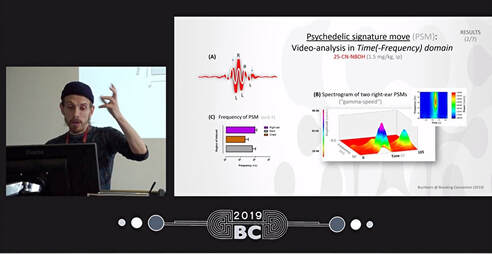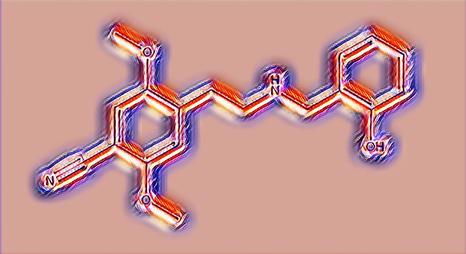Gentle reader,
As a part of our Marie-Skłodowska-Curie-Actions outreach strategy, I presented the first of our exciting findings on the "optogenetics of psychedelic drug action" at the 2019 Breaking convention congress (see youtube.com).
In our project, we use highly refined techniques of optogenetic electrophysiology to reveal how the primary key targets of psychedelic drugs (namely cortical pyramidal cells) respond while mice engage in the so-called "psychedelic signature move". The psychedelic signature move is a very brief tingle-like body-shake, which mammals off and on show when they are under the influence of a psychedelic drug.
The mechanism of this psychedelic specificum is little understood, all the more significant, as it constitutes the 5-HT2Aergic bridge from animals to humans. Our project is the first to ever shed light into the cortex as pyramidal cells and peripyramidal haemodynamics orchestrate while animals go off and on showing the enigmatic signature of behavioural psychedelia.
Enjoy :)
As a part of our Marie-Skłodowska-Curie-Actions outreach strategy, I presented the first of our exciting findings on the "optogenetics of psychedelic drug action" at the 2019 Breaking convention congress (see youtube.com).
In our project, we use highly refined techniques of optogenetic electrophysiology to reveal how the primary key targets of psychedelic drugs (namely cortical pyramidal cells) respond while mice engage in the so-called "psychedelic signature move". The psychedelic signature move is a very brief tingle-like body-shake, which mammals off and on show when they are under the influence of a psychedelic drug.
The mechanism of this psychedelic specificum is little understood, all the more significant, as it constitutes the 5-HT2Aergic bridge from animals to humans. Our project is the first to ever shed light into the cortex as pyramidal cells and peripyramidal haemodynamics orchestrate while animals go off and on showing the enigmatic signature of behavioural psychedelia.
Enjoy :)


 RSS Feed
RSS Feed